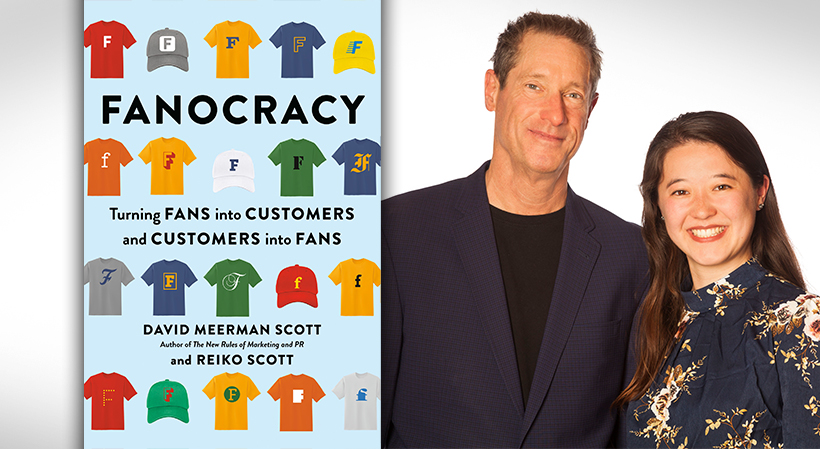The following is excerpted from “Fanocracy: Turning Fans into Customers and Customers into Fans” by David Meerman Scott and Reiko Scott with permission of Portfolio, an imprint of Penguin Publishing Group, a division of Penguin Random House LLC. Copyright © David Meerman Scott and Reiko Scott, 2020.
What is it about being around other people that drives connection? Why does physical proximity make such a difference? Cultural anthropologist Edward T. Hall has answers to those questions.
Dr. Hall defined humans’ use of space in a simple way. As director of the State Department’s Point Four Training Program in the 1950s, Dr. Hall was tasked with teaching foreign country–bound technicians and administrators how to communicate effectively across cultural boundaries. His 1966 book, “The Hidden Dimension,” describes the way people maintain various kinds of spatial boundaries—and how this can impact the way we relate to one another in any context, from our relationships with our coworkers to how our cities are designed.
If we want to be effective in our communications, we need to learn how to consciously manage the physical space between ourselves and others.
It’s not just a matter of being close or far, or that the closer we get the better it is. Rather, the significance of each level of proximity can be precisely predicted and managed so as to create the most optimal outcomes. Hall described “public distance” as more than twelve feet away from others, a distance that lacks any sense of precise interaction among those involved. He identified “social distance” for interactions among acquaintances as being from four feet to twelve feet, “personal distance” for interactions among good friends or family from about a foot and a half to four feet, and anything closer as “intimate distance” for embracing, touching, or whispering.
The degree of human proximity is tied to shared emotion and has an enormous effect on how well we do in business.
The most rewarding interactions in our lives occur in our social and personal spaces. Those people sitting near one another at a game or at Starbucks or who are standing near one another in a line at a movie theater or live music show? They’re well within each other’s social space, and as such each person can unconsciously feel the human connection in a positive and safe way.
Related: How to Add Value to Your Target Audience Through Emotional Branding
“The work of Dr. Hall is incredibly important because one of the things we’re just coming to learn now, thanks to neuroscience, is whenever human beings get together in any kind of situation in the same physical space, their unconscious minds track the locale of every other person in that space even if they can’t see them,” Dr. Nick Morgan told us. Morgan is president of Public Words, a communications consulting company, and the author of “Power Cues: The Subtle Science of Leading Groups, Persuading Others, and Maximizing Your Personal Impact.”
Morgan’s work on how humans interact parallels how fandom cultures form and grow—and how important these bonds are to each of us.
“We’re a species that wants to get together in groups of friends, of people that we feel safe with, a tribe, and we want to share our emotions,” Morgan says. “We’re happiest when we’re in social space or personal space with people and we’re all experiencing some kind of emotion. We’re laughing together or we’re crying together. It’s why— even in an era when you can watch a football game much more get closer than usual intelligently and closely and clearly and certainly more comfortably on a giant TV screen like many of us have in our homes—people still go to the football stadium. They want to experience the thrill of the shared emotion and excitement. The closer you get within those four zones, from the public zones to social, and social, to personal, the more powerful the shared emotions are. That kind of group sharing of emotion is incredibly important to humans and it’s been widely misunderstood and underrated by people who have subscribed to individualistic notions of humanity.”
People don’t want to be alone; they want to be together.
Take note of what Morgan teaches us. The closer you get, the more powerful the shared emotions are. The significance of proximity isn’t just a matter of convenience or utility, but rather the emotional significance of any given exchange. We’re wired as humans to have more emotionally significant responses to people we’re close to. And whether we’re twelve feet, four feet, or even one and a half feet apart leads to decidedly different emotions.
A fan is who they are not because of a calculated, intellectual decision to follow something, but because of their passion, their emotion, and their sense of enjoyment. To successfully build a fan base out of whatever it is you’re doing for a living, or if you want to sell or market a product or service, begin to think of creative ways to develop and cultivate human connections.
Sign Up: Receive the StartupNation newsletter!
Remember the importance of proximity because that can lead you to a better understanding of how to attract and keep potential fans interested in your products or services.
“Fanocracy: Turning Fans into Customers and Customers into Fans” is available now wherever books are sold and can be purchased via StartupNation.com.






